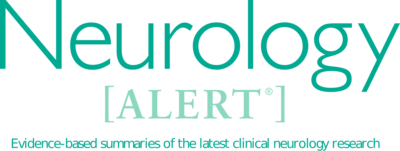
Neurology Alert – July 1, 2020
July 1, 2020
View Issues
-
A Population-Based View into the Incidence and Etiology of Papilledema
In a population-based study in Olmstead County, MN, during the period 1990 to 2014, the incidence of papilledema was 2.5/100,000 persons per year, and most patients were diagnosed with idiopathic intracranial hypertension.
-
Epilepsy 2020: At the Crossroads of Telemedicine and Smartphone Technology
In this study, the investigators show the diagnostic value of video smartphone technology with regard to a seizure diagnosis as well as the ability of smartphone video to help distinguish epileptic seizures from nonepileptic events.
-
Preventing and Treating Medication Overuse Headache
Patients with migraine who have an insufficient response to acute treatment medications, including triptans, risk developing medication overuse headache (MOH). The most successful treatment for MOH is withdrawal of the offending acute pain medications combined with early use of a migraine preventative medication.
-
Deep Brain Stimulation of the Cortico-Striato-Thalamo-Cortical Network May Be an Option for Refractory OCD
Deep brain stimulation can be a treatment option for refractory obsessive-compulsive disorder, but the results are not significantly better than lesioning procedures. Small sample sizes, diverse targets of stimulation, and inconsistencies in rating scales are limiting factors in the studies of this modality.
-
MRI and Clinical Correlation in Lumbar Arachnoiditis
Arachnoiditis, a feared complication of various spinal surgeries and procedures, shows a variety of nonspecific abnormalities on magnetic resonance imaging investigation, but there are no specific imaging features that predict prognosis.
-
Endovascular Treatment for Acute Basilar Artery Occlusion Is Safe and Effective
Patients with acute basilar artery occlusion treated by endovascular therapy within 24 hours of occlusion time had better functional outcomes and reduced mortality compared to those treated with medical therapy alone.
